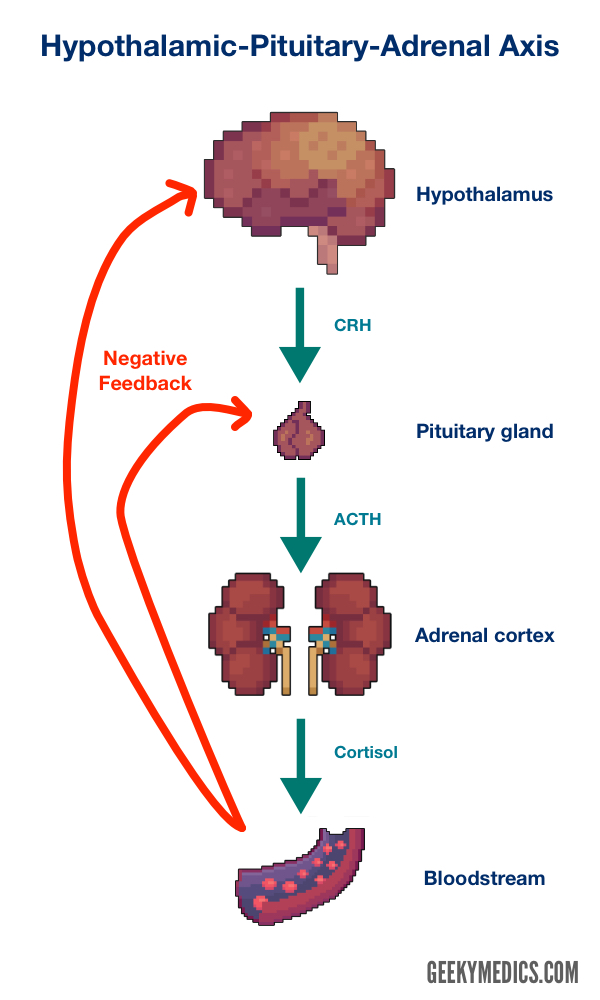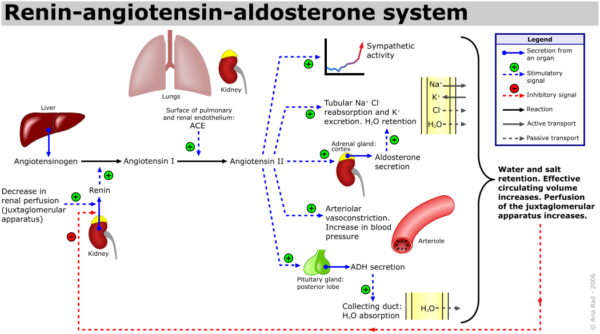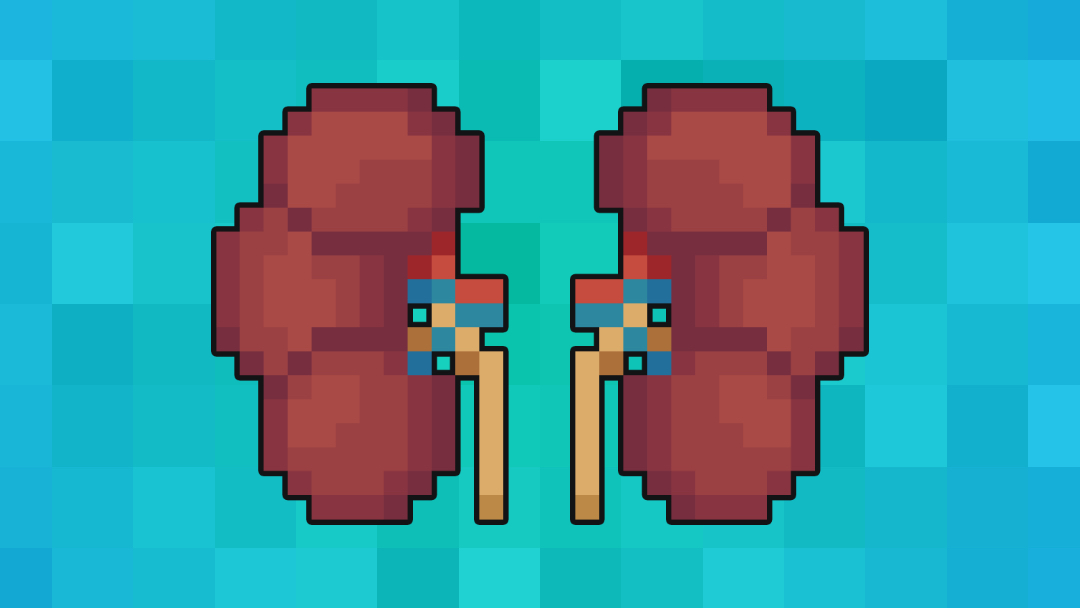- 📖 Geeky Medics OSCE Book
- ⚡ Geeky Medics Bundles
- ✨ 1300+ OSCE Stations
- ✅ OSCE Checklist PDF Booklet
- 🧠 UKMLA AKT Question Bank
- 💊 PSA Question Bank
- 💉 Clinical Skills App
- 🗂️ Flashcard Collections | OSCE, Medicine, Surgery, Anatomy
- 💬 SCA Cases for MRCGP
To be the first to know about our latest videos subscribe to our YouTube channel 🙌
What is the adrenal axis?
The adrenal axis (a.k.a. hypothalamic-pituitary-adrenal axis) refers to a complex set of interactions and feedback loops between the hypothalamus, pituitary and adrenal glands. This system regulates the body’s response to stress, immune function, energy expenditure, mood, emotions and libido.
What are the adrenal glands?
The adrenal glands are located just above each kidney. The glands produce a number of different hormones including cortisol, aldosterone, adrenaline and noradrenaline.
Each gland is composed of an outer cortex and an inner medulla.
Adrenal cortex
The adrenal cortex is responsible for producing cortisol and aldosterone.
Cortisol
Cortisol is a steroid hormone (glucocorticoid) that is released in response to stress and low blood-glucose levels.
Functions of cortisol include:
- Increasing blood glucose levels by promoting gluconeogenesis
- Suppressing the immune system
- Aiding the metabolism of fat, protein and carbohydrates
Aldosterone
Aldosterone is also a steroid hormone (mineralocorticoid) whose main function is to increase blood volume. It achieves this by promoting the reabsorption of sodium and water, whilst increasing the excretion of potassium.
Adrenal medulla
The adrenal medulla produces adrenaline and noradrenaline (both of which have similar physiological effects).
Adrenaline and noradrenaline are released during periods of stress, as part of the “fight or flight” response resulting in increased heart rate, blood pressure and muscle perfusion.
The release of adrenaline and noradrenaline is under the direct control of the hypothalamus.
Cortisol regulation
Glucocorticoid production is regulated by the hypothalamic-pituitary-adrenal-axis.
Physiology
1. Corticotropin-releasing hormone (CRH) is secreted by the hypothalamus. The release of CRH is influenced by stress levels, time of day and serum cortisol levels.
2. CRH travels in the blood and binds to specific receptors on the pituitary gland. This binding causes increased production of adrenocorticotropic hormone (ACTH).
3. ACTH is released into the bloodstream and travels to the adrenal glands, where it binds to specific receptors on the adrenal cortex.
4. The binding of ACTH to the receptors on the adrenal cortex stimulates the release of cortisol into the bloodstream, where it has a wide range of effects.
5. Increased serum cortisol levels inhibit the production of CRH and ACTH via negative feedback, preventing the overproduction of cortisol.

Aldosterone regulation
1. Low blood volume stimulates the release of angiotensin II.
2. Angiotensin II stimulates the adrenal cortex to produce aldosterone.
3. Aldosterone has a number of different actions including:
- Sodium reabsorption
- Water reabsorption
- Potassium excretion
4. Aldosterone, therefore, causes a net increase in blood volume.
5. Increased blood volume inhibits the production of angiotensin II via negative feedback.

References
- By A. Rad – Own work, CC BY-SA 3.0. Available from: [LINK]




